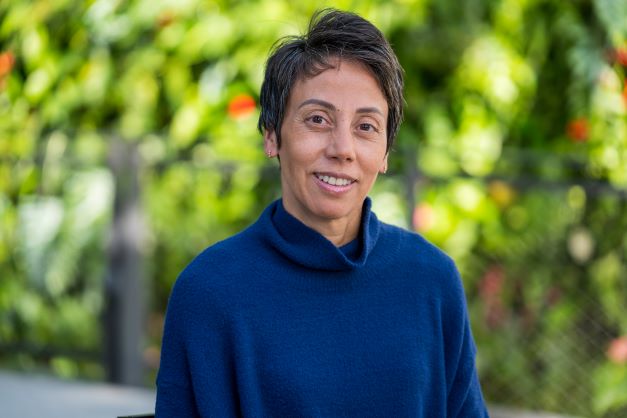 CLOUD
CLOUD
 CLOUD
CLOUD
 CLOUD
CLOUD
The COVID-19 pandemic and the business challenges it caused were a catalyst for many companies to accelerate their migration to the cloud, and that trend is not likely to change anytime soon.
Amazon Web Services Inc. is betting on companies’ growing interest in building resilience and agility in the cloud beyond pandemic times, according to Mai-Lan Tomsen Bukovec (pictured), vice president of AWS Storage.
“We’re going to continue to see that rapid migration to the cloud, because companies now know that in the course of days and months … the whole world of your expectations of where your business is going and where, what your customers are going to do, that can change,” she said. “And that can change not just for a year, but maybe longer than that. That’s the new normal.”
Bukovec spoke with Dave Vellante, host of theCUBE, SiliconANGLE Media’s livestreaming studio, during the AWS Storage Day event. They discussed how cloud is the new reality for enterprises, how AWS storage fits into the data fabric debate, and what AWS thinks about its storage strategy and about business going hybrid. (* Disclosure below.)
While the cloud is seen as the “new normal” for businesses, the paths enterprises use to get there remain diverse. AWS customers typically fall into one of three patterns, the fastest being where they choose to move their core business mission to the cloud because they can no longer scale on-premises, according to Bukovec.
“It’s not technology that stops people from moving to the cloud as quick as they want to; it’s culture, it’s people, it’s processes, it’s how businesses work,” she explained. “And when you move the crown jewels into the cloud, you are accelerating that cultural change.”
Other companies follow what Bukovec sees as the slower path, which is to take a few applications across the organization and move them to the cloud as a reference implementation. In this model of cloud pilots, the goal is to try to get the people who have done this to generalize the learning across the company.
“It’s actually counterproductive to a lot of companies that want to move quickly to the cloud,” Bukovec said.
The third pattern is what AWS calls new applications or cloud-first, when a company decides that all new technology initiatives will be in the cloud. That allows the business to be able to see cloud ideas and technology in different parts of its structure, generating a decentralized learning process with a faster culture change than in the previous pattern.
While cloud storage is centralized, it fully fits into the emerging trend known as data mesh, according to Bukovec. As first defined by Zhamak Dehghani, a ThoughtWorks consultant, a data mesh is a type of data decentralized architecture that embraces the ubiquity of data in the enterprise by leveraging a domain-oriented, self-serve design.
Data mesh presupposes separating the data storage and the characteristics of data from the data services that interact and operate on that storage, Bukovec explained. The idea is to ensure that the decentralized business model can work with this data and innovate faster.
“Our AWS customers are putting their storage in a centralized place because it’s easier to track, it’s easier to view compliance, and it’s easier to predict growth and control costs, but we started with building blocks and we deliberately built our storage services separate from our data services,” Bukovec said. “We have a number of these data services that our customers are using to build that customized data mesh on top of that centralized storage.”
Here’s the complete video interview, part of SiliconANGLE’s and theCUBE’s coverage of the AWS Storage Day event. (* Disclosure: TheCUBE is a paid media partner for the AWS Storage Day. Neither AWS, the sponsor of theCUBE’s event coverage, nor other sponsors have editorial control over content on theCUBE or SiliconANGLE.)
Support our mission to keep content open and free by engaging with theCUBE community. Join theCUBE’s Alumni Trust Network, where technology leaders connect, share intelligence and create opportunities.
Founded by tech visionaries John Furrier and Dave Vellante, SiliconANGLE Media has built a dynamic ecosystem of industry-leading digital media brands that reach 15+ million elite tech professionals. Our new proprietary theCUBE AI Video Cloud is breaking ground in audience interaction, leveraging theCUBEai.com neural network to help technology companies make data-driven decisions and stay at the forefront of industry conversations.